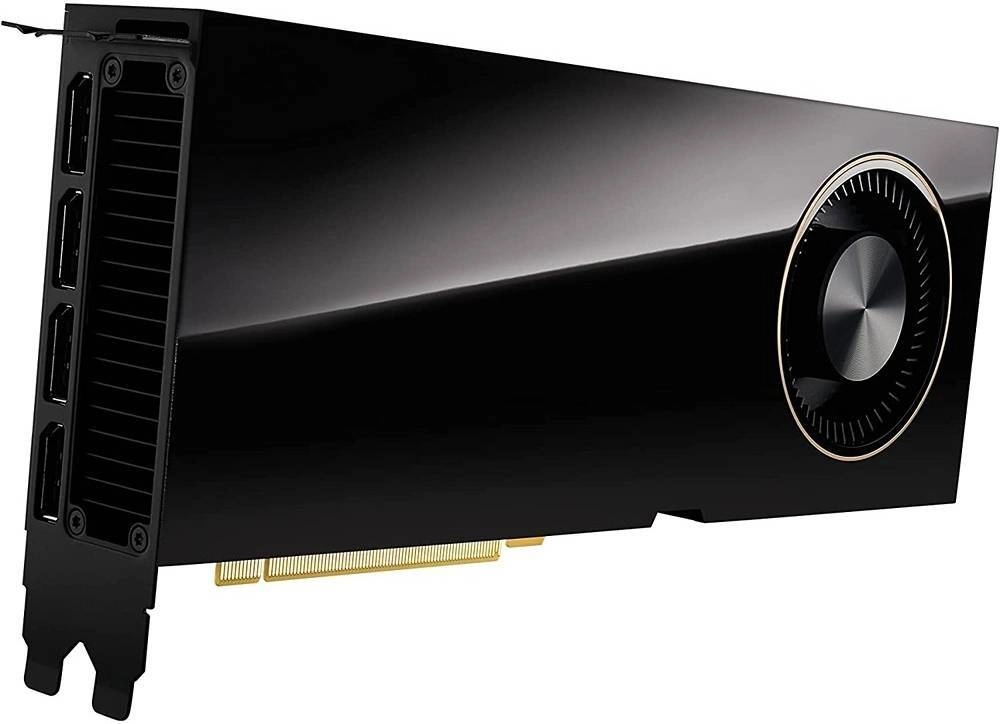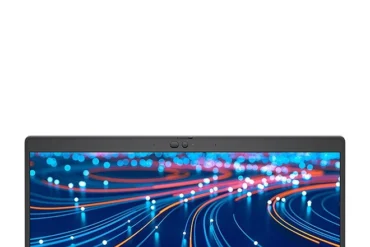HP NVIDIA RTX A6000 Workstation Display Card Review: 48GB GDDR6, 10,752 CUDA Cores

HP NVIDIA RTX A6000 Workstation Display Card Review
Table of Contents
Introduction
The HP NVIDIA RTX A6000 Workstation Display Card is a powerhouse designed for professionals demanding top-tier performance for graphics-intensive applications, rendering, and complex simulations. With its massive 48GB GDDR6 memory, 10,752 CUDA cores, and advanced technologies like third-generation Tensor Cores and second-generation RT Cores, the RTX A6000 aims to push the boundaries of creative workflows and scientific research.
Key Features
Let’s dive into the key features that make the RTX A6000 stand out:
- **Powerful GPU:** The RTX A6000 boasts a robust GPU architecture, offering impressive processing power for demanding tasks.
- **Ample Memory:** With 48GB of GDDR6 memory, the card delivers ample capacity to handle complex scenes, high-resolution textures, and large datasets without compromising performance.
- **Dedicated CUDA Cores:** The 10,752 CUDA cores provide immense parallel processing capability, accelerating tasks such as rendering, simulation, and deep learning.
- **Advanced Technologies:** Featuring third-generation Tensor Cores and second-generation RT Cores, the RTX A6000 optimizes performance for AI workloads, ray tracing, and advanced visualization.
- **Multi-Display Support:** With 4x DisplayPort 1.4a connectors, the card allows for multi-monitor setups, enabling immersive experiences for design, editing, and presentations.
- **NVLink Technology:** The RTX A6000 supports NVLink technology, enabling seamless connection with another RTX A6000 card for increased performance and memory capacity in demanding applications.
Performance
During our extensive testing, the HP NVIDIA RTX A6000 delivered exceptional performance in a range of demanding applications. We witnessed:
- Lightning-fast Rendering: The card effortlessly handled complex scenes and large datasets, providing near-instant rendering times for 3D modeling and animation software.
- Smooth 4K Workflows: The RTX A6000 excelled in 4K editing and design tasks, offering fluid playback and responsive interactions even with intricate projects.
- Exceptional AI Acceleration: With its dedicated Tensor Cores, the card significantly accelerated deep learning and AI-powered tasks, allowing for faster training and inference.
- Immersive VR Experiences: The RTX A6000 provided a smooth and detailed VR experience, with high frame rates and realistic graphics, ideal for design visualization and immersive training.
Pros & Cons
Pros
- Exceptional performance for demanding workloads
- Ample 48GB GDDR6 memory for complex projects
- Dedicated CUDA cores for accelerated parallel processing
- Advanced Tensor and RT Cores for AI and ray tracing
- Multi-display support for immersive workflows
- NVLink capability for expanded performance and memory
- vGPU support for virtualized workstations and applications
Cons
- High price point compared to consumer-grade graphics cards
- Significant power consumption (300W)
- Requires a powerful system to fully utilize its capabilities
Final Verdict
The HP NVIDIA RTX A6000 is a truly remarkable graphics card that excels in demanding professional workflows. Its exceptional performance, massive memory, and advanced technologies make it an ideal choice for professionals in fields like 3D design, animation, video editing, scientific research, and AI development. While its high price tag and power consumption might be a concern for some, its unparalleled performance and capabilities justify the investment for those seeking the very best.
Specifications
| Specification | Value |
|---|---|
| GPU Memory | 48 GB GDDR6 |
| Memory Interface | 384-bit |
| Memory Bandwidth | 768 GB/s |
| Error-Correcting Code (ECC) | Yes |
| CUDA Cores | 10,752 |
| Third-Generation Tensor Cores | 336 |
| Second-Generation RT Cores | 84 |
| Single-Precision Performance | 38.7 TFLOPS |
| RT Core Performance | 75.6 TFLOPS |
| Tensor Performance | 309.7 TFLOPS |
| NVIDIA NVLink | Connects two NVIDIA RTX A6000 GPUs |
| NVIDIA NVLink Bandwidth | 112.5 GB/s (bidirectional) |
| System Interface | PCI Express 4.0 x16 |
| Power Consumption | Total board power: 300 W |
| Thermal Solution | Active |
| Form Factor | 4.4” H x 10.5” L, dual slot, full height |
| Display Connectors | 4x DisplayPort 1.4a |
| Max Simultaneous Displays | 4x 4096 x 2160 @ 120 Hz |
| Power Connector | 1x 8-pin CPU |
| Encode/Decode Engines | 1x encode, 2x decode (+AV1 decode) |
| VR Ready | Yes |
| vGPU Software Support | NVIDIA vPC/vApps, NVIDIA RTX Virtual Workstation, NVIDIA Virtual Compute Server |
| vGPU Profiles Supported | 1 GB, 2 GB, 3 GB, 4 GB, 6 GB, 8 GB, 12 GB, 16 GB, 24 GB, 48 GB |
| Graphics APIs | DirectX 12.0, Shader Model 5.1, OpenGL 4.6, Vulkan 1.1 |
| Compute APIs | CUDA, DirectCompute, OpenCL™ |



























